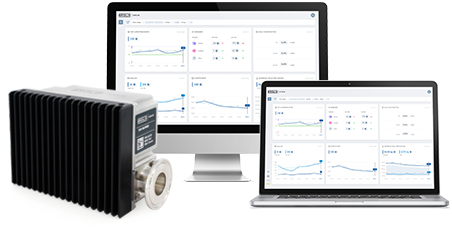Diagnostic value of lactose in milk
It is very important to be aware of and observe the trends of lactose variation in milk and correlations with other indicators, because they can be an excellent indicator in the diagnosis of certain diseases or in determining the estrus of cows. The concentration of lactose in milk can also be used to assess the balance of diets. A decrease in lactose concentration in milk can be the cause of a lack of energy in feed or digestive disorders.
Lactose and electrical conductivity
Changes in lactose and electrical conductivity are considered one of the most reliable indicators in the diagnosis of clinical and subclinical mastitis. Due to inflammation in the udder, the synthesis of lactose in the udder and the balance of potassium, sodium, chlorine ions between blood and milk are disturbed. The composition of milk and its electrical conductivity change.
Lactose and SCC
A negative correlation was found between lactose and SCC in milk. Lactose concentration starts to decrease when SCC >100 thousand/ml. It is associated with inflammatory processes occurring in the udder.
Lactose and milk protein concentration
This is associated with the animal’s health. A more intense inflammatory process in the mammary gland and body affects the increase in protein concentration. And due to the weakening of mammary gland function and the effects of bacteria, the concentration of lactose decreases.
Methods for determining lactose
The lactose content in milk is most often determined by sending control milk samples to the laboratory, although with the development of technology, it is possible to integrate sensors in milk lines that display the lactose content in milk in real time.
Iodometric or enzymatic determination
These are the reference methods for determining lactose content. They are reliable and accurate, but can be carried out only in laboratories, since qualified personnel must carry out the procedures using special equipment and reagents. Also, the tests take a relatively long time, making them impractical to use at milk processing plants or farms.
Spectroscopic laboratory equipment
Lactose, like other components of milk, is determined by analysing the absorption and emission spectra with the help of infrared rays. This technique is very popular all over the world and is used in many laboratories to analyse the constituents of milk. Most often, such equipment is adapted for laboratory use, so it is quite expensive and requires qualified specialists. However, with the development of technology, there are opportunities to make this type of method more practical and adapted for use on farms as well as in laboratories.
BROLIS HerdLine milk analyzer
The in-line milk analyzer BROLIS HerdLine is like a small laboratory on your dairy farm. The analyzer examines the composition of each cow’s milk during each milking. This “mini-spectroscope” is installed in the milking stalls or milking robot in the milk line and does not require additional reagents and special maintenance.
The analysis of fat, protein and lactose provides a proper evaluation of the health, productivity and economic efficiency of dairy cattle. The data collected during milking is processed in real time and can be viewed using the BROLIS HerdLine application.
What affects milk lactose?
Milk lactose – otherwise also called milk “sugar”, is made up of glucose and galactose. Lactose is unique in that it is found only in milk. About 60-85% of the glucose in the blood is used to synthesise lactose in milk.
The main factors that determine the productivity of cattle are heredity, nutrition and health of the cattle. It has been observed that in the absence or insufficient application of advanced housing and maintenance technologies, the increase in cattle productivity is associated with an increase in the cost of veterinary services. Changes in lactose content can be associated with fertility in cattle, metabolic diseases or mastitis. An increase may indicate calves while a decrease may indicate mastitis, subclinical ketosis or acidosis.





